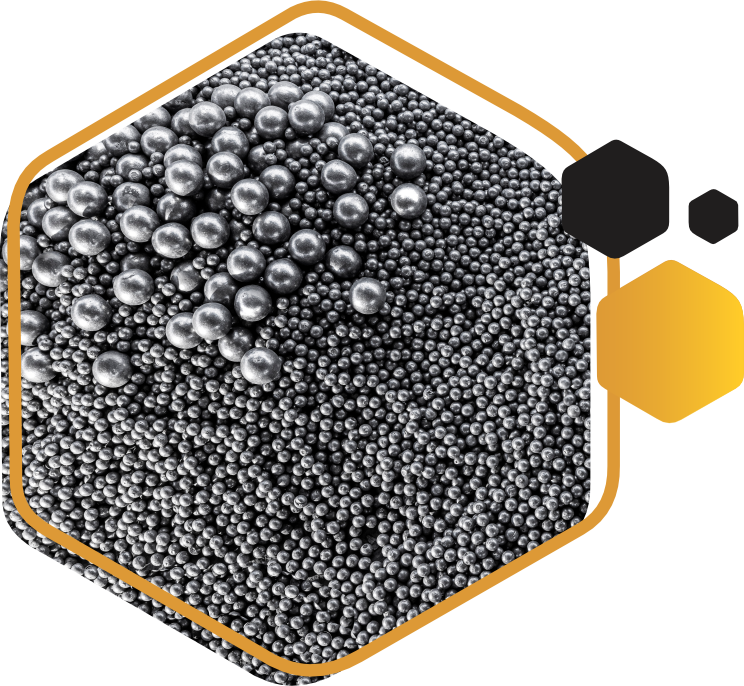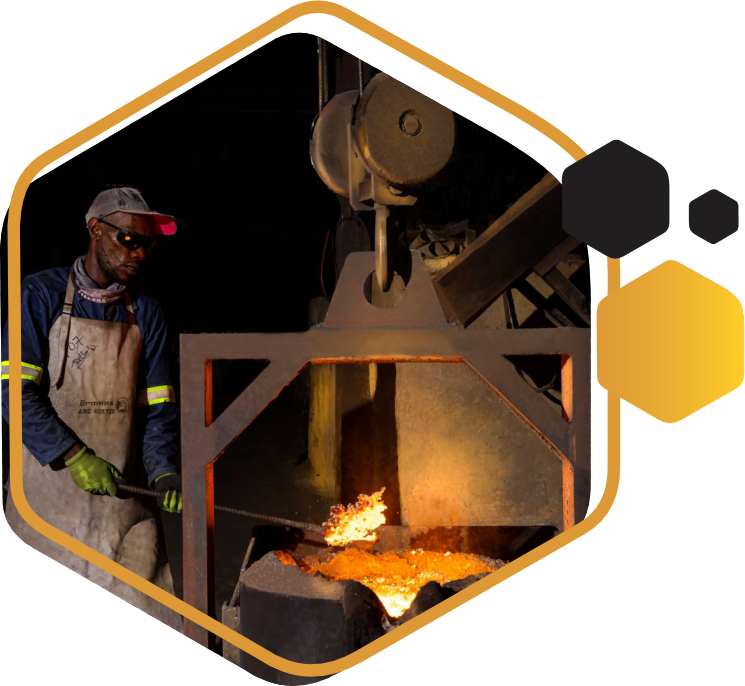The use of different sizes of grinding media balls in the mining industry is aimed at optimizing the grinding process to achieve maximum efficiency in mineral extraction. In general, larger grinding media balls are used for coarse grinding, while smaller balls are used for fine grinding.
To ensure that the produced parts meet customer specifications and quality standards, we follow a rigorous quality control system that includes testing and inspection at different stages of the production process. These tests include hardness, metallurgical, impact, tensile and non-destructive.
Coarse grinding is typically used to break down larger ore particles into smaller pieces, which are then further ground down using finer grinding media. Large grinding media balls can handle the high impact and pressure of coarse grinding, which can involve the crushing and fracturing of large mineral particles. These larger balls are typically made of steel and can range in size from 70 mm to 150 mm in diameter.
Fine grinding, on the other hand, involves the grinding of smaller mineral particles to achieve the desired size and consistency. Smaller grinding media balls are used for this process, as they can generate a higher surface area of contact between the media and the ore particles, resulting in more efficient grinding. These smaller balls can range in size from 30 mm to 70 mm in diameter and are often made of high-density steel.
Overall, the use of different sizes of grinding media balls is an important aspect of optimizing the grinding process in the mining industry, as it can help to improve the efficiency of mineral extraction and reduce costs

Chrome is commonly used in the casting of grinding media balls as a material that provides high wear resistance and strength to the balls. Chromium content in the range of 10-18% is added to the steel in the production of grinding media balls to improve their performance and durability.
The addition of chrome to the steel increases the hardness of the grinding media balls, making them more resistant to wear and deformation during the grinding process. This is because chrome forms carbides within the steel, which help to reinforce the crystal structure and increase the strength of the steel. Additionally, the chromium content can also improve the corrosion resistance of the grinding media balls, reducing the risk of rust and other forms of corrosion.
Overall, the use of chrome in the casting of grinding media balls is an important factor in optimizing the grinding process, as it helps to improve the durability and wear resistance of the balls, reducing the need for frequent replacement and ultimately reducing costs.
Grinding media balls are heat treated for several reasons, including improving their hardness, strength, wear resistance, and overall performance during the grinding process.
During the heat treatment process, the grinding media balls are heated to a specific temperature and held at that temperature for a specific time. This helps to modify the microstructure of the steel and improve its mechanical properties, such as its hardness and strength.
Heat treatment can also help to eliminate any residual stresses in the steel, which can improve the toughness and durability of the grinding media balls. Additionally, heat treatment can improve the resistance of the balls to wear and deformation during the grinding process, ultimately increasing their lifespan and reducing the need for frequent replacement.
Overall, heat treatment is an important process in the production of grinding media balls, as it helps to optimize the performance and durability of the balls, ultimately leading to improved efficiency and reduced costs in the mining industry.
Foundry casting is a manufacturing process used to create complex metal shapes and objects through the use of moulds. In this process, molten metal is poured into a mould and allowed to cool and solidify, resulting in a final product that takes the shape of the mould.
The foundry casting process begins with the creation of a pattern or model of the desired product. The pattern can be made from a variety of materials, including polystyrene, wood, plastic, or metal, and is used to create a mould. The pattern is then coated with a refractory material to create the mould, which can be made of sand, plaster, or other materials.
Once the mould is created, molten metal is poured into it using a ladle or other pouring device. The metal fills the mould and takes on its shape as it cools and solidifies. After the metal has cooled, the mould is removed, and the final product is cleaned and finished.
Foundry casting can be used to create a wide range of metal products, including engine parts, tools, and decorative objects. It is a versatile and cost-effective manufacturing process that can be used for both small-scale and large-scale production. However, it requires careful attention to detail to ensure that the final product meets the desired specifications and quality standards

The lost foam process is a casting method where a foam pattern is used to create a metal casting. In this process, a foam pattern is created in the shape of the desired casting and then coated with a refractory material to create a shell around it. The foam pattern is then placed in a trolley and surrounded by unbonded sand. Molten metal is poured into the trolley, causing the foam pattern to vaporize and the molten metal to take its place, creating the desired casting.
The lost foam process is often used for complex shapes and designs, as the foam pattern can be easily carved or moulded to create intricate details. It is also a relatively fast and cost-effective process compared to other casting methods, as it eliminates the need for a separate pattern and core-making process. However, the process requires careful attention to detail to ensure that the foam pattern is properly coated and that the sand surrounding the pattern is compacted to prevent metal from leaking or defects from forming in the casting